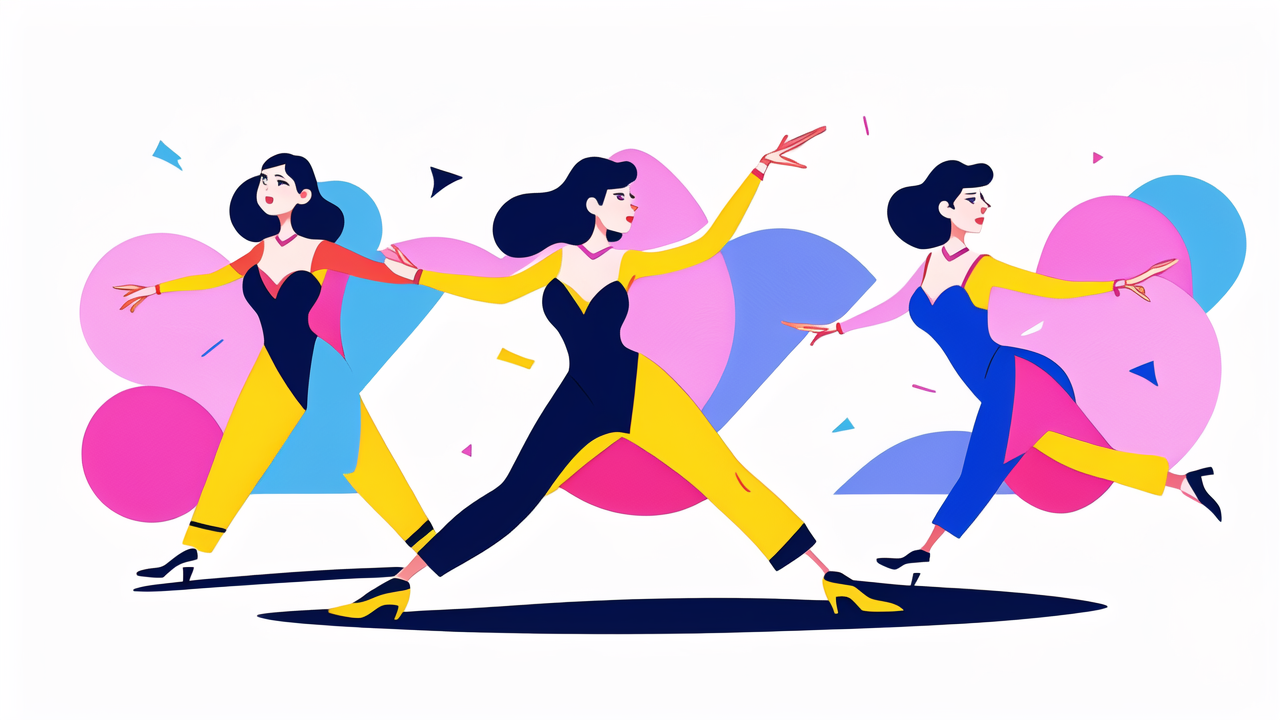The Evolution of Ballroom Fashion: Tracing the Journey
From Tradition to Modernity in Ballroom Attire
The shift in ballroom attire for women is striking. Once, it was all about long skirts and strict styles. Now, modern looks steal the show. Flowing gowns have made way for bespoke outfits that mix tradition with trends. Dancers today choose dresses that let them move freely and shine on the dance floor. Comfort has joined hands with style, creating a new age in ballroom fashion.

Celebrating Milestones in Women's Ballroom Fashion
Ballroom dancewear for women has come a long way. It's more than just outfits; it's a story of empowerment. Let's celebrate the big moments in women's ballroom fashion:
- The Roaring '20s introduced shorter hemlines, giving women the freedom to move.
- In the 1950s, ballroom gowns became more ornate, reflecting a post-war celebration of luxury.
- The 1970s saw the birth of the 'disco' era, with flares and glitter dominating the dance floor.
- By the 2000s, high-tech fabrics and dancewear that manages moisture changed the game.
- Today, the focus is on eco-friendly materials, showing a commitment to sustainability.
Each milestone in ballroom fashion reflects shifts in society and women's growing role in it. The evolution is a dance of progress and style.
Innovations in Design and Comfort: A New Era for Women Dancers
Breaking Barriers with Technological Advancements
The ballroom dance floor has witnessed a revolution. Advances in technology have broken down old limits. Dancers today find themselves amid high-performance fabrics and state-of-the-art designs. These high-tech materials offer better mobility and durability. Gone are the days of one-size-fits-all. Dancewear now features moisture-wicking and thermal properties. This keeps dancers cool under the spotlight. Such fabrics also reduce the risk of injuries. They allow for more freedom in movement. Smart designs now come with built-in supports. These give the wearer both shape and stability while dancing. Shoes have not been left behind. They now boast improved soles for better grip and comfort. For women in ballroom dancing, the wardrobe has become a tech-ally. It helps them perform with confidence and grace. These innovations have changed the dance floor forever. They opened doors for dancers to push the boundaries of performance.
The Importance of Personalization in Ballroom Attire
In the world of women's ballroom dancewear, personalization is key. Dancers now have the freedom to tailor their attire to their bodies and styles. This shift has led to a new era where comfort meets elegance. Gone are the days of one-size-fits-all outfits. Now, custom fittings and designs let dancers express their personalities. The result is not just a boost in confidence but also in performance. Each dress reflects the dancer's unique artistry and contributes to the dance's visual impact. Indeed, personalization is transforming women's ballroom dancewear into both a fashion statement and a competitive edge.
The Global Impact of Women's Ballroom Dancewear
How Different Countries are Shaping the Trend
Women's ballroom dancewear has a unique story in every land. In Italy, art meets style with extravagant designs. France focuses on chic elegance, fueling a sleek trend. The USA mixes sport with glam, creating versatile looks. China's dancewear blends tradition with new trends, and Russia's costumes show a love for drama and luxury. Each place adds its flair, making the dance floor a global stage.
The Role of Women's Dancewear in International Ballroom Competitions
Women's ballroom dancewear plays a crucial role in international competitions. This attire not only needs to impress judges aesthetically but also accommodate the demanding physicality of performances. Judges often consider the elegance and appropriateness of dancewear when scoring. As such, each costume is meticulously designed to augment a dancer's movements and embody the music and dance style being performed. Furthermore, the dancewear reflects the cultural nuances that vary from competition to competition, sometimes incorporating traditional elements to connect with the heritage of the dance. These costumes have become a symbol of diversity and skill, allowing dancers to shine on the world stage and contribute to the grand spectacle that is international ballroom dancing.
